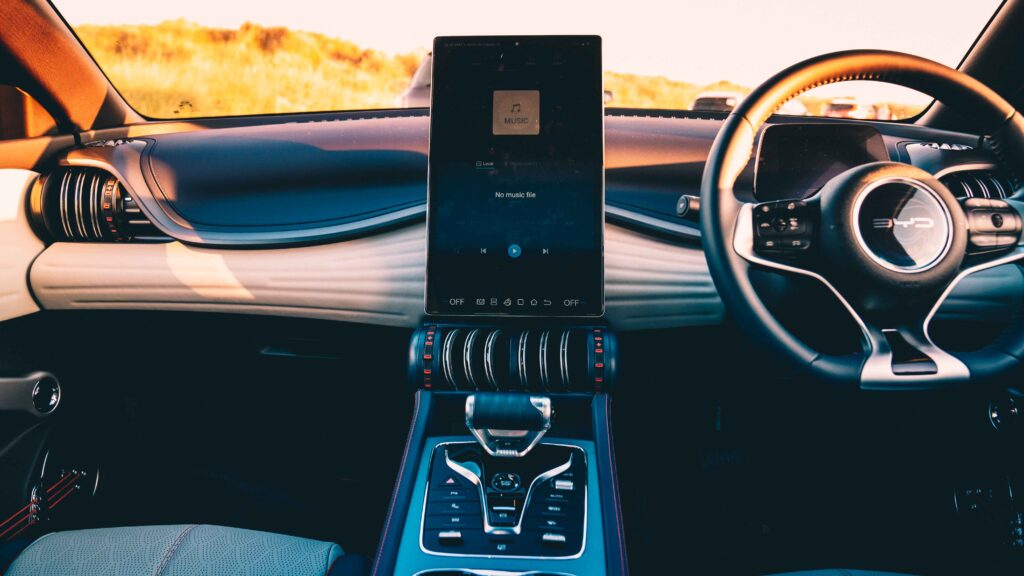Another player has entered the ring, and this Chinese manufacturer has a 28 year background in battery technology. Since 1995 they have developed their business into building forklifts, buses, cars, rail, renewable energy and much more.
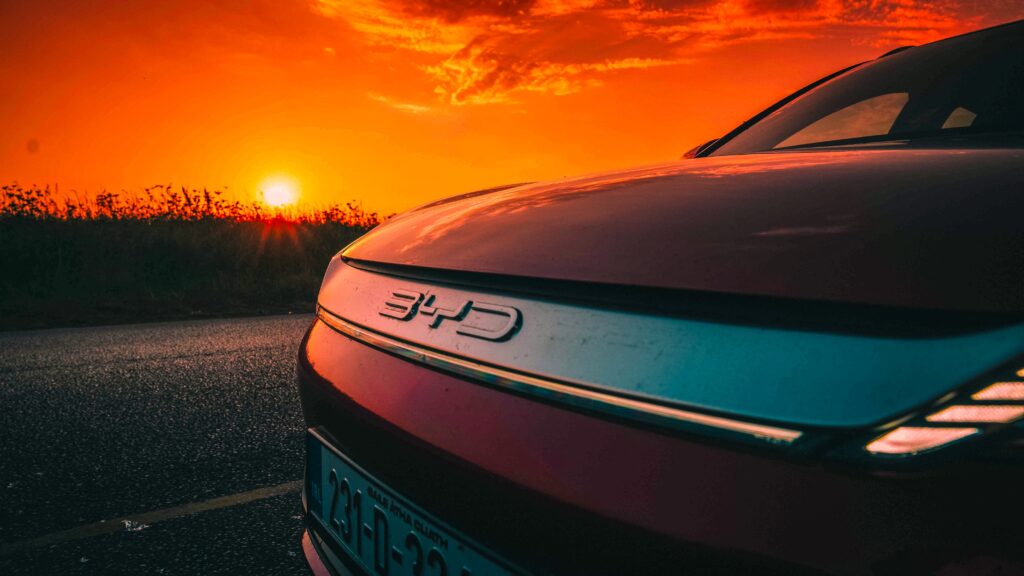
Special mention : The central touchscreen is easy to use, easy to read and can swivel to your preferred landscape/portrait setting. Lane assist can be set to your preference and will stay that way. Plenty of passenger and rear boot space.
Needs work : Drivers central screen is a bit on the small side and hasn’t got much in the way of graphics or info. The ‘guitar’ strings’ for cubby bin storage may not last the pace. Slow charging is slow.
| 88 KW | Electric / Auto |
| 0-100 km/h in 7.3 seconds | Road Tax €120 |
| Price: from €39,078 As specc’d €40,949.00 | Boot Space 555 – 1,338 litres |
The Atto 3 gets around 420 kms on a full battery in hot weather testing. It can fast-charge up to 88kW getting the brand new blade 60kWh battery some 10-80% charge in around 44mins. If you’re not using a fast charger, going from 25-100% will take around 7.5 hours on a shared 22kw/h plug. With a 7kW home wall box, a full charge from an empty battery will take around 10 hours.
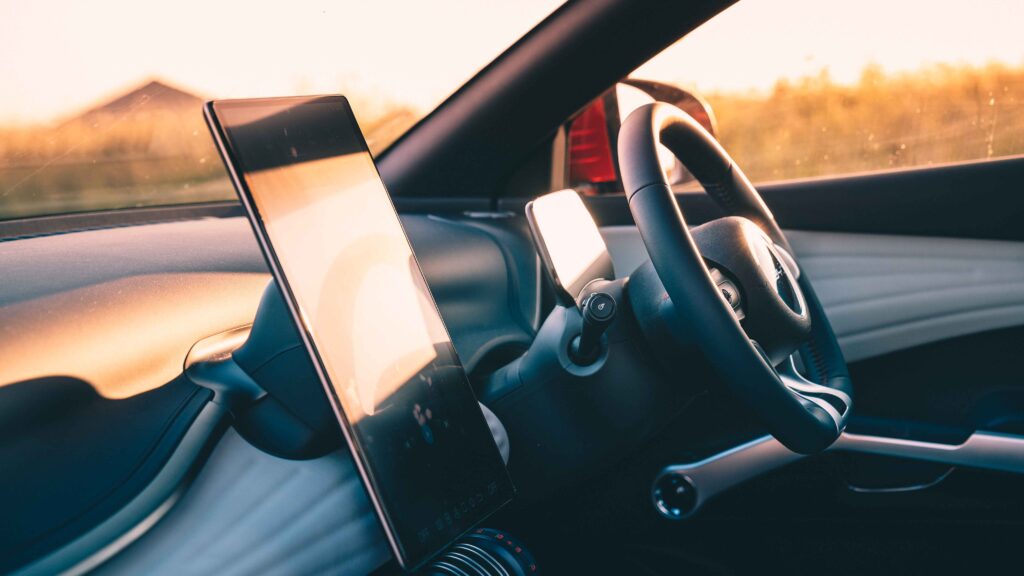
It’s a good thing that there’s a heat pump as standard, it can help improve thermal efficiency by up to 20% in colder weather which helps keep the battery from losing those valued electrons. All Atto 3s come with a vehicle-to-load facility that allows you to charge devices using the car’s main battery. Mid-spec Comfort costs a bit more and adds an 11kW on-board charger, rather than a 7kW one. Top-spec Design adds mats, a larger touchscreen and ambient lighting for the door release. To keep things simple, there are no options.
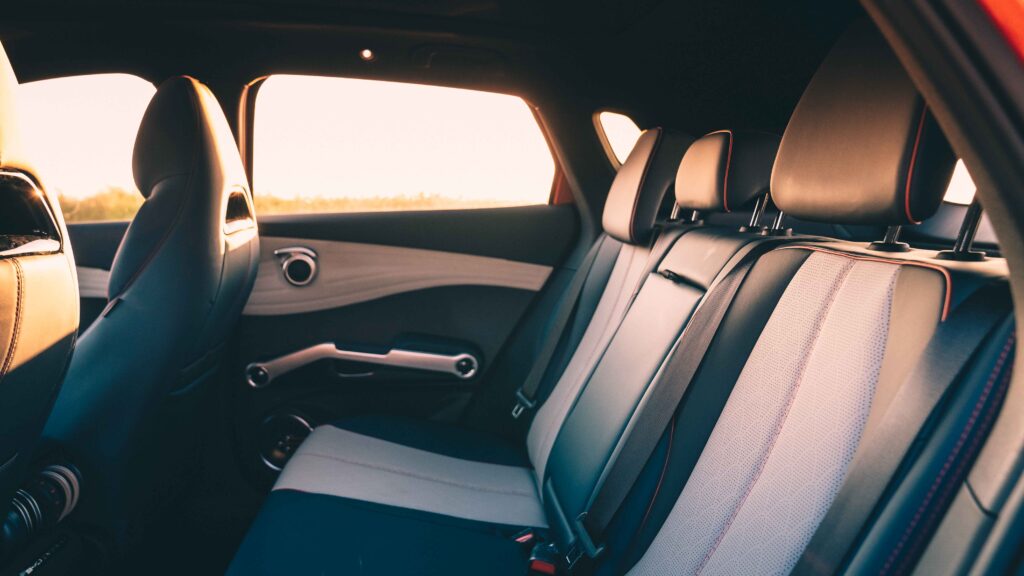
The Atto 3 scored the full five stars when it was tested for safety by Euro NCAP and it doesn’t nag the driver incessantly like the Ora Funky Cat. best of all, once you set your lane assist preference, it stays that way. Standard safety kit includes blind-spot monitoring, traffic-sign recognition, automatic emergency braking (AEB), and lane-keep assist.
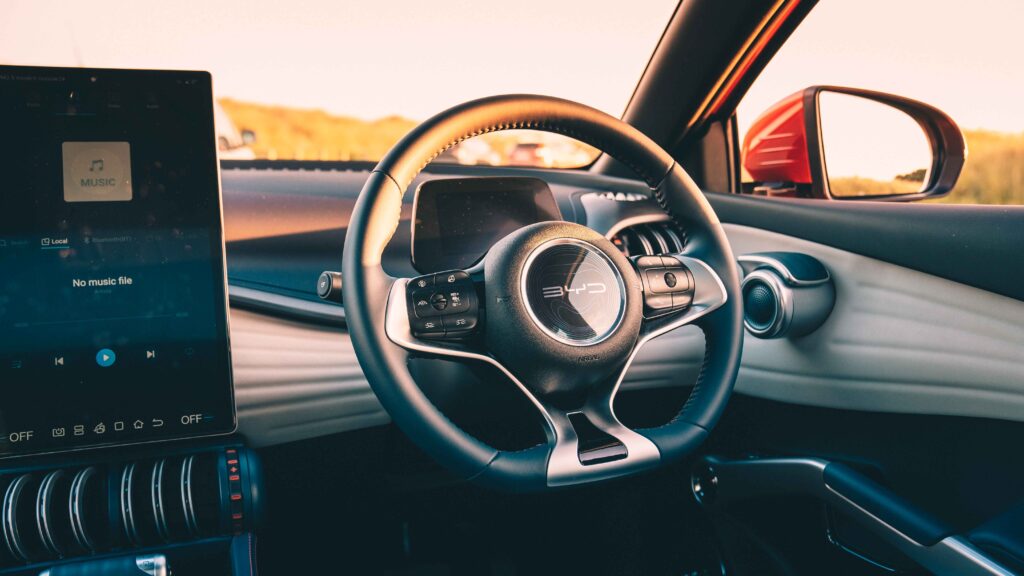
The touchscreen infotainment display may have a couple of tricks but the display itself is quite good as it’s easy to read, navigate and adjust your preferences. It can be rotated 90 degrees to either landscape or portrait. Some apps don’t adjust to both and are better in one or the other. You can adjust the screen using either a button on the screen, steering wheel or by voice command. The screen is 15.6” on top-spec Design models and 12.8” on other versions, and is clear, crisp and responsive. The climate controls are a little fiddly and the icons appear on the bottom of the screen and spaced out quite far apart in landscape mode. Most menus are generally easy to navigate. wireless phone-charging works very well and isn’t sensitive to the placement on the mat, which is grippy and at an angle which helps keep the phone in situ. The stereo isn’t going to give audiophile’s anything to talk about but the eight-speaker audio system and wired Apple CarPlay/ Android Auto works well and is audible. The driver gets a 5in digital instrument display, similar to those offered in the VW ID range. It doesn’t offer much information, there’s no options to set your dial or graphics preferences but it’s clear and easy to read the limited information.
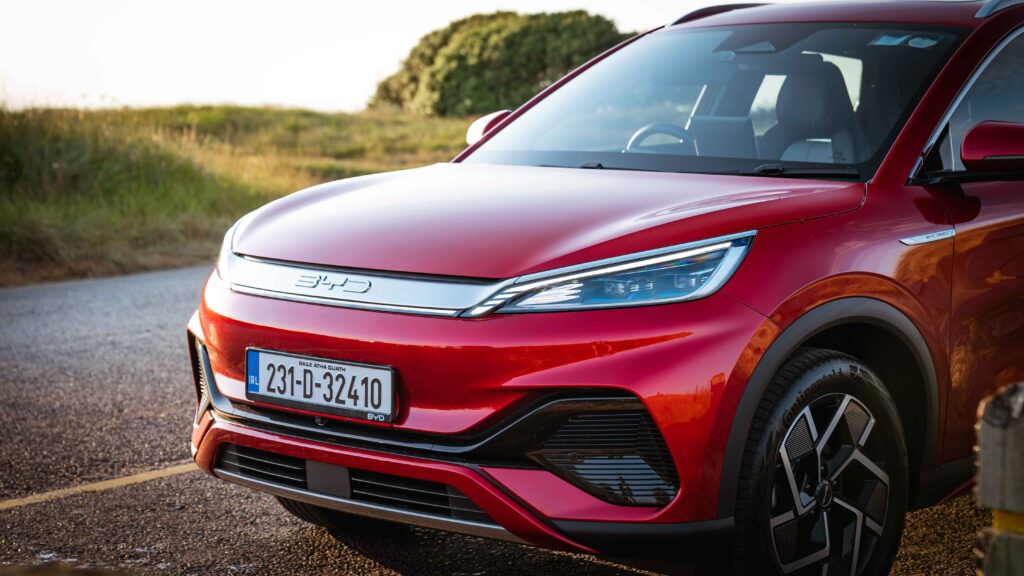
Where the outside assumes the standard SUVs look, the interior has a little more imagination in its design. The dashboard washes across the front passengers, with swooping lines. The door handles have been compared to weight training equipment with which wrap around the speakers. You kind of lift them up as opposed to out, which is a nice design detail, it works well and is functional. The gear selector has the feel of a flight deck but instead of park being activated via the button on the side you need to ensure you do so via the electric parking brake or separate switch.
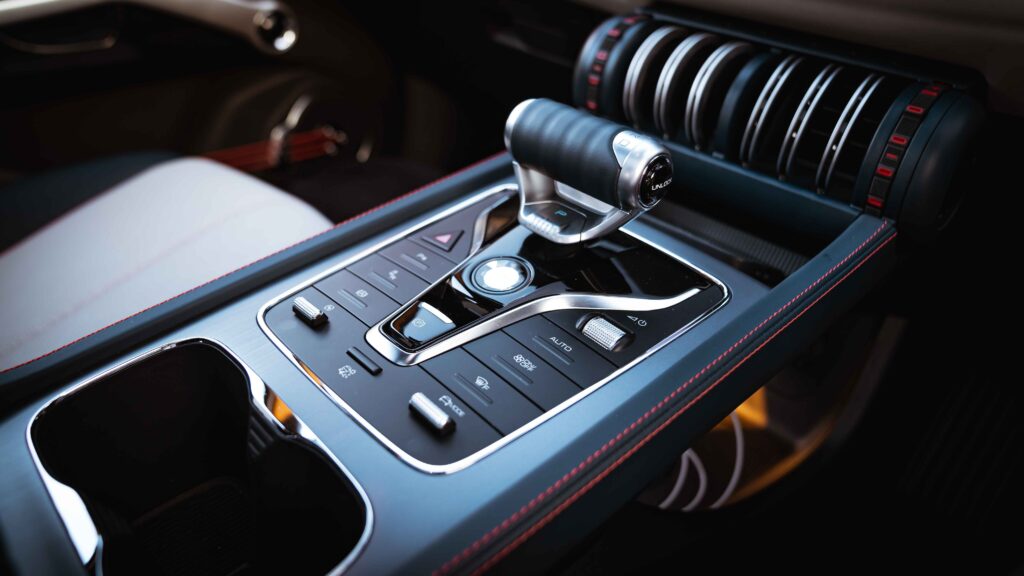
Much like Skoda they’ve made the best use of the interior space. There’s a floating centre console with space and a few charging points underneath, you will need to stop the car to plug anything in as it’s quite low down and difficult to access USBs. The cupholders have a small step for flat whites oa larger space for bigger bottles. There’s also cubby space in the centre armrest. Instead of door bins the Atto 3 has three elastic strings to hold everything in place, I’m not sure how long these will put up with the daily rigour of pulling things in and out of the space. Also, the first thing any child does when they see them is to pull on them, repeatedly.
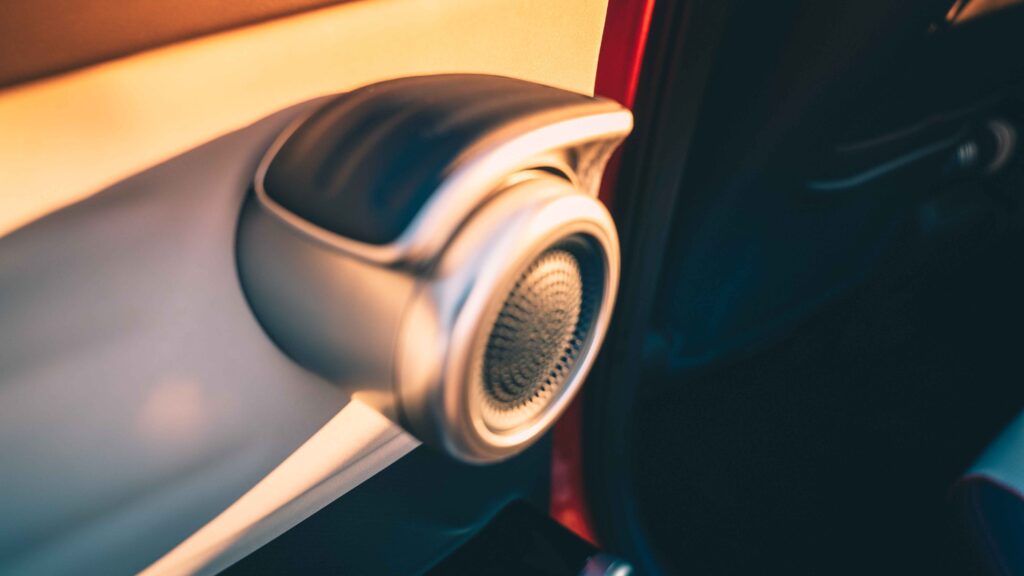
The rear seats split 60/40-split via a pull tag on the shoulders. There’s no levers in the boot to help flip them down without opening the back doors. The 555 litre boot expands to 1338 litres with the seats down. And there is plenty of space for cables under the boot floor.
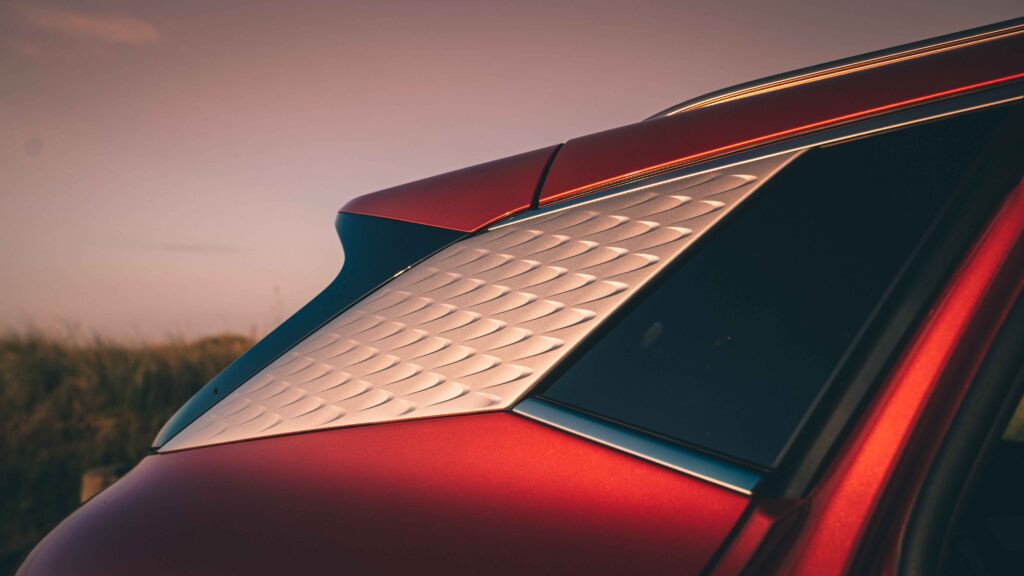
BYD boasts that they manufacture the world’s first mass-produced 8-in-1 electric powertrain, they have a whole host of cars coming our way and the Atto 3 is just the beginning. The Han, Tang, Dolphin and Seal are already on sale in other markets and Ireland will expect to have at least 3 on sale by the end of the year. The Atto 3 has its work cut out against other Chinese manufacturers on sale in Ireland with low cost pricing and high spec cars. What BYD promises is delivery. They’ve cut out the middle men including the shipping magnates as they own more than 3 cargo ships and as of October last year, have put in an order for 8 cargo ships totaling a cost of €635 million Euro. While manufacturers such as MG struggle in Ireland to process orders, BYD say they can deliver.
